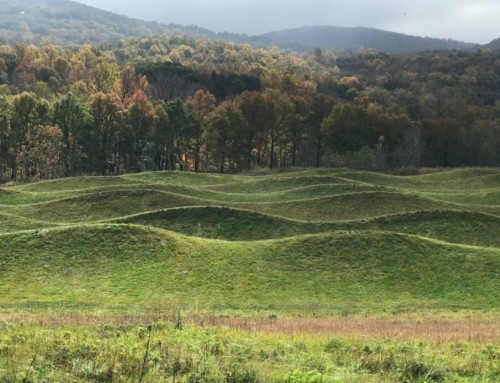If we want to garden in a more ecologically beneficial way, it only makes sense to go outdoors and see what the natural world can teach us. I recently joined a Monday morning hiking group. Now I have an appointment to climb mountains instead being too busy writing about nature to get out in it. My week starts off on the right foot, the sights I see foster a really productive train of thought and I’m learning about mushrooms from some experts.
Something about walking gets my creative juices going. When a sight just stops me in my tracks or some little detail along the trail quietly speaks to me, I’m trying to figure out why – and take a photo. What’s going on aesthetically? What’s the underlying ecology? What patterns can I see? How can I transpose the essence to my own yard or use the idea in a garden coach client’s landscape? I feel the tug of a new talk birthing – so stay tuned. Hopefully Learning from Nature will be ready to share by this time next year.
It doesn’t look like much is going on in the woods after most deciduous trees have shed leaves and gone quiet for the winter. But recent woodland walks have given me ideas and inspiration aplenty.
It’s bloom time for our eastern native witch hazels (Hamamelis virginiana). With ample rain in recent months, these graceful understory trees are really strutting their stuff. The little bundles of pale yellow filaments clustered along grey-barked twigs are pretty enough to look at – any flowers this late in the year are a treat. Put a witch hazel between you and the sun, though, and they’re all aglow.
How can I use this?
- Backlighting creates its own luminous magic when low slanting sunbeams shine through translucent petals or leaves. Site autumn or spring-blooming witch hazels outside your sunrise or sunset-watching windows.
- Contrast jazzes up the scene. Vivid color pops against a drab background, light against dark, light-transmitting against opaque, delicate branches against solid-looking evergreens.
- Layers in the forest are a model for low-maintenance landscapes. In an intact forest ecosystem, with canopy trees above understory trees, over understory shrubs and a ground layer, each plant occupies its own niche, leaving little room for intruders. Decomposing leaves and fallen branches nourish soil organisms and improve soil structure, which increases water-holding capacity and returns nutrients to plants. No fertilizer, mulch, weeding or watering necessary. If we put the layers back into our yards and gardens, they will function a lot more like a self-sustaining natural system.
- Temporal niches allow plants, pollinators and predators to meet when the time is right. Early spring ephemeral wildflowers bloomed in time with emergence of their insect pollinators (which then became bird food). They collected a year’s worth of energy from the sun’s rays before trees leafed out, then went dormant. Hamamelis virginiana, the latest of late bloomers, waits for its pollinator, a winter moth. Read more about this under-appreciated understory beauty.
- Scale We might not have room to plant a mighty oak or maple, but smaller-scale understory trees are just right for small yards, and can be tucked in under existing canopy trees.
- Shade is a challenge many gardeners struggle with. Understory trees are just right for shady yards.
Sure, it can be hard to leave the warmth of house and home, but who knows what wonders await outdoors? A walk a day keeps cabin fever away. My friend Christine and I had a great end-of-the-day walk and talk down a dirt road along the Housatonic River at Thanksgiving-time.
We stopped to greet a chubby porcupine nibbling the tippity-top twigs of a witch hazel – what a rare and special sight! Dried beech leaves clinging to young trees rattled and rustled in the wind. The snow squall we’d seen across the valley snuck up on us as twilight fell. It was exciting to hear the wind stirring and icy bits smacking down on oak and beech leaves, bouncing off the forest floor as the storm approached. And then – whiteout! Fun to be walking in it rather than white-knuckle driving! White swirling snow quickly passed and we made our way back to the car as a full moon rose over the mountains, it’s double reflected in the river.
Our little adventure was packed with sights, sounds and experiences. In winter’s silence, inactivity and dreariness, it’s so lovely to encounter the natural world with all our senses.





